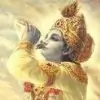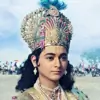There are several places in the text where Rama's age is brought up and sometimes it can get problematic.
The verses you quoted are in Sarga 45 in the Critical Edition which has a different reading. Instead of "for twelve years I lived", the Critical Edition reads "For one year I lived". Similarly, instead of "in the thirteenth year", the Critical Edition reads "a year later". The "twelve years" reading is supported by the Southern and North Western Recensions and the Pollock, et al translation of the Critical Edition go with that reading as well.
The part about Sita's age being 18 when they went into exile is present in all analyzed manuscripts except one (the oldest one, a Nepali manuscript). . However, based on some other issues in the manuscript, this is most likely a case of portions of the text being missing due to faulty copying (manuscripts were copied by hand) rather than the verse being absent in the original text. The Critical Edition rejects this line but their decision is disputed. The Pollock, et all translation retains the line
Some other verses dealing with Rama's age:
Balakanda, Sarga 19, Sloka 19 (this is when Vishwamitra has asked Dasaratha to allow Rama and Lakshman to go with him):
My lotus-eyed Rama is not yet sixteen years of age. I cannot see how he can be fit to do battle with raksasas.
Ayodhyakanda, Sarga 17, Sloka 26 (this is just after Kaikeyi has spoken to Rama about the exile and abdication and Rama and Lakshman go to Kausalya's chamber and Rama tells her about the tragic developments; this is part of her response):
The ten years and seven since you were born, Raghava, I have passed yearning to put an end to my sorrow.
Here she is apparently saying that Rama was 17 when he was exiled.
Aranyakanda, Sarga 36, Sloka 3-6 (this is part of Maricha's descriptions about Rama and his life story):
But then the great sage, righteous Visvamitra, who was terrified of me, came in person to Dasaratha and addressed the lord of men as follows: "Let Rama come and vigilantly protect me at the time of the lunar sacrifice, lord of men, for I am terribly afraid of Maricha." So the great and illustrious sage Visvamitra spoke, and the righteous King Dasaratha replied to him: "Raghava is a mere twelve years old and unpracticed in arms. I, on the other hand, am prepared to go with all the army at my command and slay your enemy, best of sages, just as you desire. "
Sundarakanda, Sarga 31, Slokas 13-14 (here Sita is telling Hanuman about herself and her story):
For twelve years I lived in Raghava's house, enjoying all human pleaures and having everything that I could possibly want. Then - in the thirteenth year - the king, along with his preceptors, undertook the consecration of that heir to the Iksvaku dynasty as king.
The question of Rama's age has been an issue of great discussion by the commentators because of the apparent discrepancies. Many commentators and the southern recension read
dvadasa i.e. "twelve" in 3.36.6. But the Critical Edition decided to go with
unasodasa i.e. "less than sixteen" instead. Among the commentaries,
Bhusana and
Tattvadipika are of the opinion that Rama was 12 when Visvamitra showed up at Dasaratha's court while
Siromani and
Tilaka state that he was 15 which is the age (according to
Amrtakataka) that the sastras say a kshatriya should take up armour. According to
Amrtakataka, "
una-" means "reduced by one or two" and therefore Rama was around 15 or so when Vivamitra took him away. This commentary is also of the opinion that the sloka is not trying to assign a specific age to Rama; instead it is simply saying that Rama had not yet acquired the age of majority (i.e. 16). It also says that Maricha may have been exaggerating when he described Rama as 12 when he was Visvamitra's hermitage (since he was trying to convince Ravana not to go up against Rama).
Meanwhile, the sloka from Ayodhyakanda quoted above (2.17.26) adds another source of discrepancy since Kausalya says (at the time of the exile) that it has been 17 years since Rama's birth which contradicts the slokas from Aranyakanda which say that he was 25 at the time. The North-Eastern and some North-Western manuscripts have "eighteen" instead of "seventeen". There are 3 Devanagari manuscripts which give the age as 27 in this verse (interestingly, the Sarada manuscript, belonging to th NW recension, the age is 27 in 3.45.10 instead of 25 years; this is unique amongst all the manuscripts analyzed).
The commentators (especially
Tattvadipika) explain the apparent discrepancy in Kausalya's words by interpreting "born" as "reborn": in other words, they are saying that Kausalya is referring to Rama's symbolic "rebirth" at the initiation ceremony which takes place at age 8 for kshatriyas. So it has been 17 years since Rama's initiation ceremony at age 8 which gives us: 8 + 17 = 25.
There is a variation in the readings of of 3.45.4-5 and 5.31.13-14 in the NE recensions where Rama is said to be just under 16 at the time of his marriage and he is said to have lived at Ayodhya with Sita for just one year. This tells us that Rama was literally 17 at the time of his exile. The problem here is that the NE recension contradicts itself in its version of 2.17.26 where Rama's age is given as 18 not 17. It also contradicts itself in 3.45.10 where it retains the common reading of Rama being 25 at the time of exile.
As I mentioned earlier, the Critical Edition also states that Rama and Sita stayed at Ayodhya just for 1 year after marriage. This was probably done to reconcile Rama's age with Kausalya's words in 2.17.26 which they probably understood to be literally 17 years of age. Unfortunately this creates a contradiction with 3.45.10.
SummaryRama's age when Visvamitra arrived at Dasaratha's court: 12 (Southern Recensions,
Bhusana and
Tattvadipika commentaries), 15 (
Siromani and
Tilaka commentaries), "less than 16" (NE recensions and Critical Edition and the
Amrtakataka commentary). Note that both 12 and 15 are consistent with the "less than 16" reading.
Rama's age at marriage: same as above
Duration of Rama and Sita's stay at Ayodhya prior to exile: 12 years (Southern and NW recensions), 1 year (NE recensions and Critical Edition)
Time when Rama was exiled: 13th year of his marriage to Sita (Southern and NW recensions), 1 year after marriage (NE recension and Critical Edition)
Rama's age at the time of being exiled: 25 (Southern and most NW recensions and Critical Edition, as per 3.45.10), 17 years after being "born" (this is interpreted to be 17 yrs after initiation ceremony according to commentators; this also adds up to 25), 18 years after being "born" (NE and some NW recensions but note that the NE contradicts this in other passages), 27 (Sarada manuscript as well as 3 Devanagari manuscripts)
The only place where Sita's age is specifically mentioned is the Aranyakanda which gives it as 18 at the time of the exile (this line is omitted in a Nepali manuscript as noted above). This means she was around 5-6 at the time of marriage (the exile happens in the 13th year of the marriage but we would need more details about the exact time when the exile was ordered to pinpoint whether she was 5 or 6 when she got married).
If Rama was 25 and Sita 18 when they were exiled then they were about 39 and 33 when they returned. This means Sita was at least 33 when Lava-Kusha were born. Taking the children to be around 12 when they are reunited with their father, Rama was around 51 and Sita 47 when she returned to the Earth.



























913